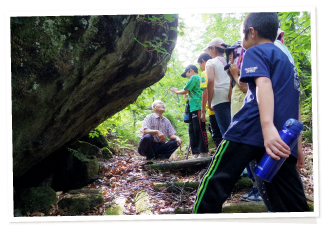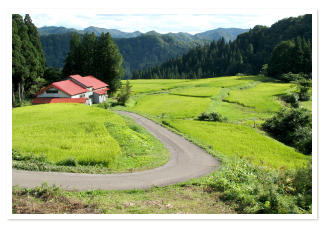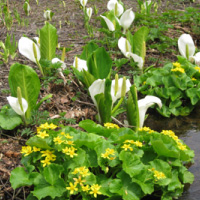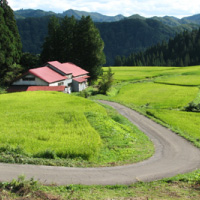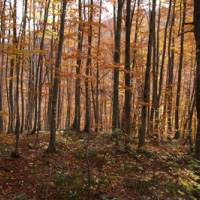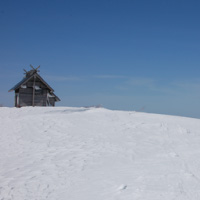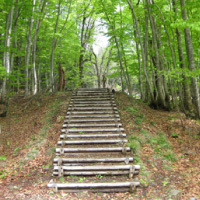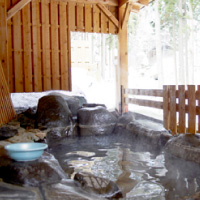Chōshi Falls(銚子の滝)
.jpg/4(1)__461x320.jpg)
Chōshi Falls
A very long time ago Chōshi Falls looked quite different. The river disappeared through a hole in the ground, and the flowing water slowly dissolved the subterranean limestone, forming a large hollow dome beneath the earth. But at some point, part of the ceiling and the wall of this underground dome collapsed, creating the grotto that exists today.
During the Edo period (1603–1867) a large rock was balanced above the grotto of Chōshi Falls. It made the waterfall look like sake being poured from a chōshi, a type of sake decanter, giving the falls its name. Chōshi Falls is part of the Yunosawa River, which joins the Fujisato River in the west before flowing into the Sea of Japan. The rock is no longer above the falls.
During winter, most of Akita Prefecture’s rivers freeze over, but the waterfalls continue flowing. Chōshi Falls develops a large, dome-like stalagmite of ice that can rise up to 2 meters above the base of the falls. Water continues to fall through a narrow hole in the stalagmite’s center, flowing down into the pool beneath the ice.
Based on Fujisato’s town records, Yu no Sawa Shrine was likely built here in the late 1600s, following the discovery of the nearby hot springs. Since then, Chōshi Falls has been a site of local worship and ceremony.
------------------------------
日本語訳
銚子の滝
太古の昔、銚子の滝はまったく違った形をしていた。川は、地面の穴へと消え、流水は地下の石灰岩をゆっくりと溶かし、地面の下に大きな中空のドームを形成していた。しかしある時、この地下ドームの天井と壁の一部が崩壊し、今日存在する洞窟ができた。
江戸時代(1603〜1867年)、銚子の滝の洞窟の上に巨岩があった。そのため、滝水が銚子から注がれる酒のように見え、そのことから滝の名前が付けられた。銚子とは、酒を入れる瓶の一種である。銚子の滝は湯ノ沢川の一部であり、湯ノ沢川は西の藤里川に合流したのち、日本海に流れ込む。岩はもう滝の上にはない。
冬の間、秋田県のほとんどの川が凍結するが、滝は流れ続ける。銚子の滝は、ドーム状の巨大な氷筍を造り上げるが、それは滝つぼからから2メートルにまで達することがある。滝水は氷筍の中心の狭い穴から流れ続け、氷の下の池に流れ込む。
藤里町の記録によると、湯の沢神社は、近くの温泉の発見に併せて1600年代後半に建てられたとのことである。それ以来、銚子の滝は地元の人々にとって崇拝と儀式の場所であった。















